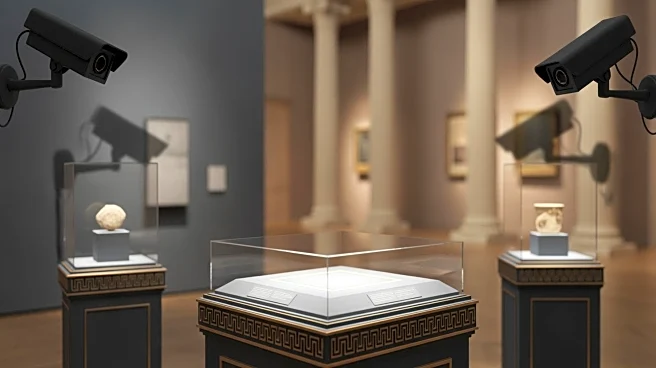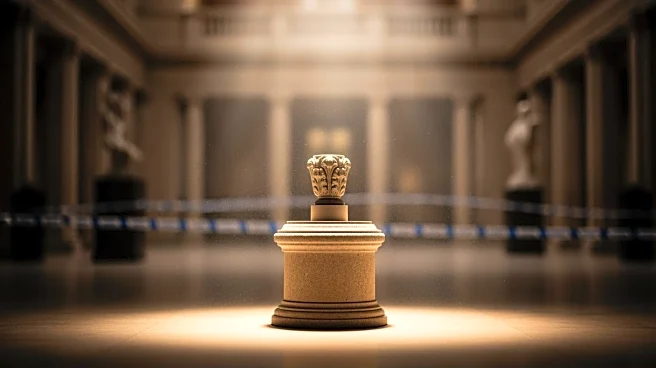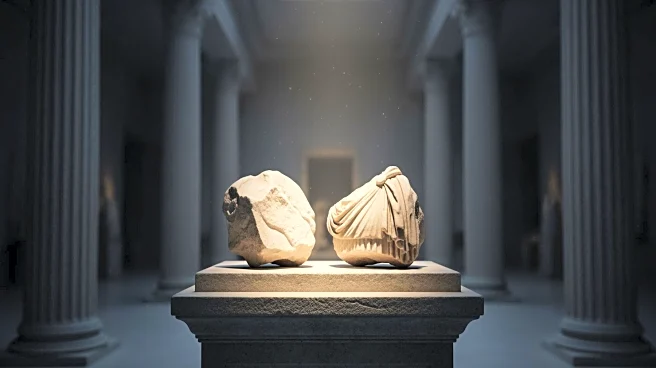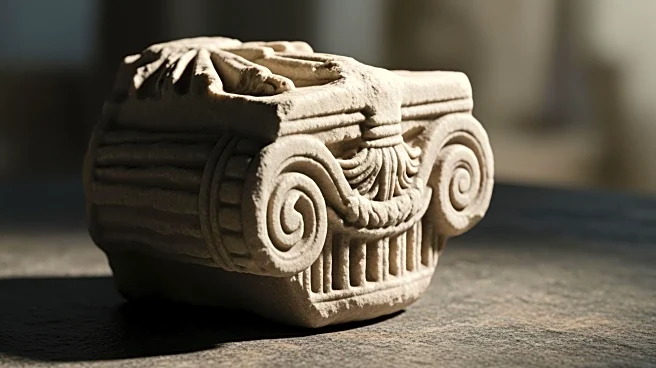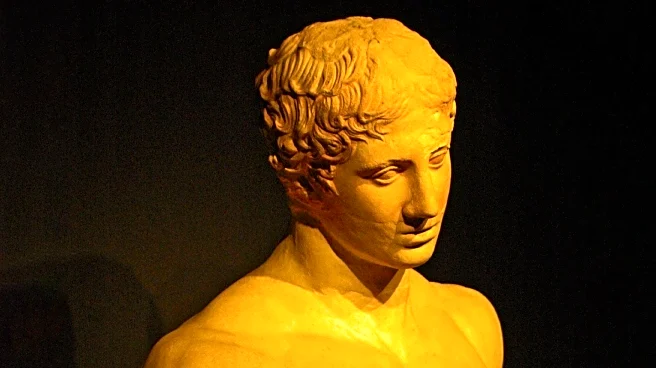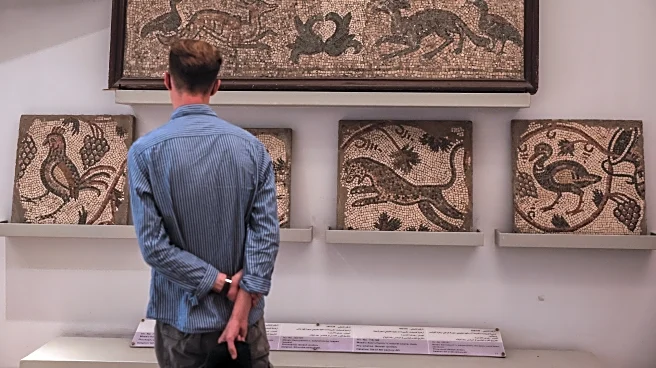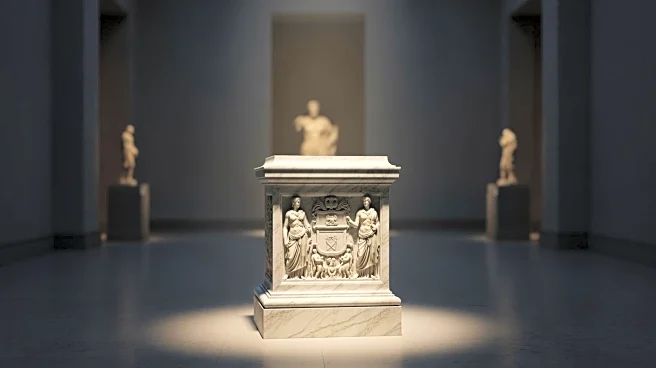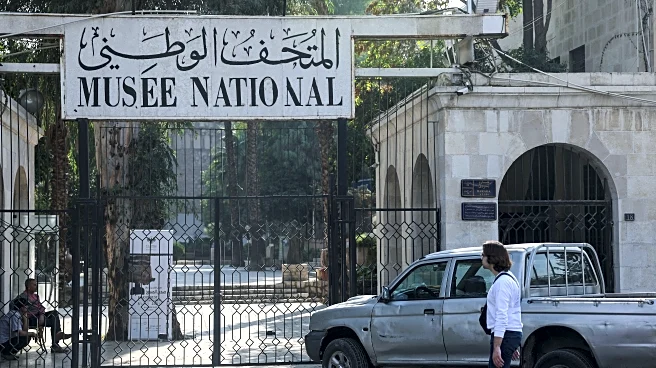What's Happening?
The Damascus National Museum in Syria has recently been the target of a significant theft, with six Roman-era statues and several gold ingots reportedly stolen from its classical department. The theft occurred
on Sunday night and was discovered the following morning when a broken door was found. The Directorate General of Antiquities and Museums (DGAM) and Syria's Ministry of Culture confirmed the theft and launched an investigation, although details remain scarce. The museum, established in 1919, houses thousands of antiquities and has faced security challenges, particularly during Syria's civil war and the collapse of the Assad regime. Concerns about the museum's security capabilities have resurfaced, with UNESCO noting deficiencies in safety provisions during a recent assessment.
Why It's Important?
The theft at the Damascus National Museum highlights significant security vulnerabilities in cultural institutions, especially in regions affected by conflict. The loss of valuable artifacts not only represents a cultural and historical setback but also raises questions about the effectiveness of current security measures. The incident underscores the need for enhanced protection of cultural heritage sites, which are often targeted during times of political instability. The scrutiny faced by Syrian cultural authorities may lead to increased international support and pressure to improve security protocols, safeguarding the nation's rich historical legacy.
What's Next?
In response to the theft, UNESCO is supporting the Damascus Museum in purchasing surveillance equipment, door locking systems, and fire alarms to enhance security. However, these upgrades are limited to one storage room due to resource constraints. The investigation into the theft is ongoing, with several museum employees and guards reportedly detained and interrogated before being released. The Syrian Ministry of Culture's brief publication of details regarding the stolen artifacts, followed by its removal, has intensified demands for transparency. The international community may continue to monitor the situation, potentially offering further assistance to prevent future incidents.
Beyond the Headlines
The theft raises broader ethical and legal questions about the protection of cultural heritage in conflict zones. It highlights the challenges faced by institutions in maintaining transparency and accountability while navigating political and security pressures. The incident may prompt discussions on international cooperation and the role of organizations like UNESCO in preserving cultural heritage. Long-term, the event could lead to shifts in how cultural sites are managed and protected, emphasizing the importance of safeguarding history for future generations.
